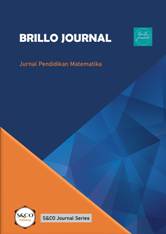An Analysis of Ethnomathematics Didactical Contract in the Sums of Interior and Exterior Angles
DOI:
https://doi.org/10.56773/bj.v3i2.52Keywords:
Didactical contract, Exterior angles, Interior angles, Students, SumsAbstract
Teachers and students have different ideas and expectations about the didactical situation that evolves in the classroom. It needs rules that determine teachers’ and students’ unique responsibilities relating to the didactical situation or contract. The division of roles and responsibilities moves from the teacher as the centre to the students as the centre. The results of a case study design of 42 students showed that the transition from ostentation to Mayeutic Socrate and then to the adidactical contracts was smooth and progressive if the teacher and the participants cooperated and actively participated in the milieu. It was therefore recommended that teachers streamline method-friendly guidelines, strategies, and techniques at the ostentation contract for students to emulate, students cooperate and support the teacher at the mayeutic Socratic contract and the knowledge of both local indigenous and exotic artifacts must complement each other at the adidactical contract.
References
Bhandari, P. (2023, June 21). Population vs. Sample | Definitions, Differences & Examples. Scribbr. https://www.scribbr.com/methodology/population-vs-sample/
Blanco, T. F., Gorgal-Romarís, A., Núñez-García, C., & Sequeiros, P. G. (2022). Prospective Primary Teachers’ Didactic-Mathematical Knowledge in a Service-Learning Project for Inclusion. Mathematics, 10(4), 652. https://doi.org/10.3390/math10040652
Chetty, P., & Thakur, S. (2020, January 27). How to establish the validity and reliability of qualitative research? Project Guru. https://www.projectguru.in/how-to-establish-the-validity-and-reliability-of-qualitative-research/
Creswell, J. W., & Creswell, J. D. (2018). Research design: Qualitative, quantitative, and mixed methods approaches. SAGE publications.
Fuadiah, N. F. (2021). Theory Of Didactical Situation (TDS), Kajian Karakteristik dan Penerapannya dalam Pembelajaran Matematika. Jurnal Pendidikan Matematika (JUDIKA EDUCATION), 4(2), 160–169. https://doi.org/10.31539/judika.v4i2.3054
Fuadiah, N. F. (2017). Analyzing phenomena of teaching mathematics trough perspective of didactical contract. In S. Supardi, B. Buchory, M. Muhdi, S. Sunandar, F. Murtadho, M. Jumarin, A. Ahad, M. Konting, H. Haji, H. Rahmat, S. Buang, & D. Pornsima (Eds.), Proceedings International Conference on Education and Science (pp. 909–915). Pengurus Besar Persatuan Guru Republik Indonesia.
Hurtado, O. G., Poveda, R., & Sanchez, J. F. M. (2021). Teaching mathematics through didactic situations. Elementary Education Online, 20(1), 3372–3377. https://doi.org/10.17051/ilkonline.2021.01.380
Jacobs, D. (2018). Categorising What We Study and What We Analyse, and the Exercise of Interpretation. In Qualitative research in European migration studies (pp. 133–149). https://doi.org/10.1007/978-3-319-76861-8_8
Maknun, C. L., Rosjanuardi, R., & Jupri, A. (2020). Didactical Design on Drawing and Analysing Trigonometric Functions Graph through a Unit Circle Approach. International Electronic Journal of Mathematics Education, 15(3), em0614. https://doi.org/10.29333/iejme/9275
Mangiante-Orsola, C., Perrin-Glorian, M.-J., & Strømskag, H. (2018). Theory of didactical situations as a tool to understand and develop mathematics teaching practices. Annales de Didactique et de Sciences Cognitives, Special issue, 145–174. https://doi.org/10.4000/adsc.334
Ministry of Education Ghana. (2019). Mathematics Curriculum for Primary Schools (Basic 4-6). National Council for Curriculum and Assessment (NaCCA). https://nacca.gov.gh/wp-content/uploads/2019/04/MATHS-UPPER-PRIMARY-B4-B6.pdf
Nery, É. S. S. (2022). Theory of Didactical Situations: Theoretical Rereading from the Perspective of Inclusive Playful Mathematics Education. Jornal Internacional de Estudos Em Educação Matemática, 15(2), 107–115. https://doi.org/10.17921/2176- 5634.2022v15n2p107-115
Prabawanto, S., Suryadi, D., Mulyana, E., Ratnasari, D., & Dewi, F. (2018). Didactical design of integers: an elementary school teachers creation viewed from didactical situation perspective. Journal of Physics: Conference Series, 1040, 012037. https://doi.org/10.1088/1742-6596/1040/1/012037
Prabowo, A., Suryadi, D., & Dasari, D. (2021). Analysis of mathematical didactic situation constructed by prospective teachers based on learning trajectory. Journal of Physics: Conference Series, 1918(4), 042051. https://doi.org/10.1088/1742-6596/1918/4/042051
Principe, L. (2022, September 21). How to Establish Data Accuracy in Qualitative Research. Civicom. https://www.civicommrs.com/how-to-establish-data-accuracy-in-qualitative-research/
Priya, A. (2021). Case Study Methodology of Qualitative Research: Key Attributes and Navigating the Conundrums in Its Application. Sociological Bulletin, 70(1), 94–110. https://doi.org/10.1177/0038022920970318
Torres, R., Simões, A. R., & Pinto, S. (2024). Research Impact and Sustainability in Education: A Conceptual Literature Review. Education Sciences, 14(2), 147. https://doi.org/10.3390/educsci14020147
Vaughan-Lee, H., Moriniere, L. C., Bremaud, I., & Turnbull, M. (2018). Understanding and measuring scalability in disaster risk reduction. Disaster Prevention and Management: An International Journal, 27(4), 407–420. https://doi.org/10.1108/DPM-04-2018-0099
Willie, M. M. (2023). Distinguishing Between Population and Target Population: A Mini Review. Surgery Research Journal, 3(2), 1–2. https://doi.org/10.33425/2768-0428.1027
Downloads
Published
How to Cite
Issue
Section
License
Copyright (c) 2024 Clement Ayarebilla Ali

This work is licensed under a Creative Commons Attribution 4.0 International License.
The authors agree that this article remains permanently open access under the terms of the Creative Commons Attribution 4.0 International License




